Adapalene and niacinamide can be a great skincare combination that can help target multiple skin concerns, including acne, hyperpigmentation, uneven skin tone, texture, and even sun damage.
However, whether you can combine these two active ingredients in your skincare routine is still up for debate.
While some experts say it’s okay to mix them, others feel that it could be too much for the skin and could possibly irritate it.
Therefore, in this article, we’ll explore what adapalene and niacinamide are, how they work, and if they can be safely mixed without causing any irritation or damage to your skin.
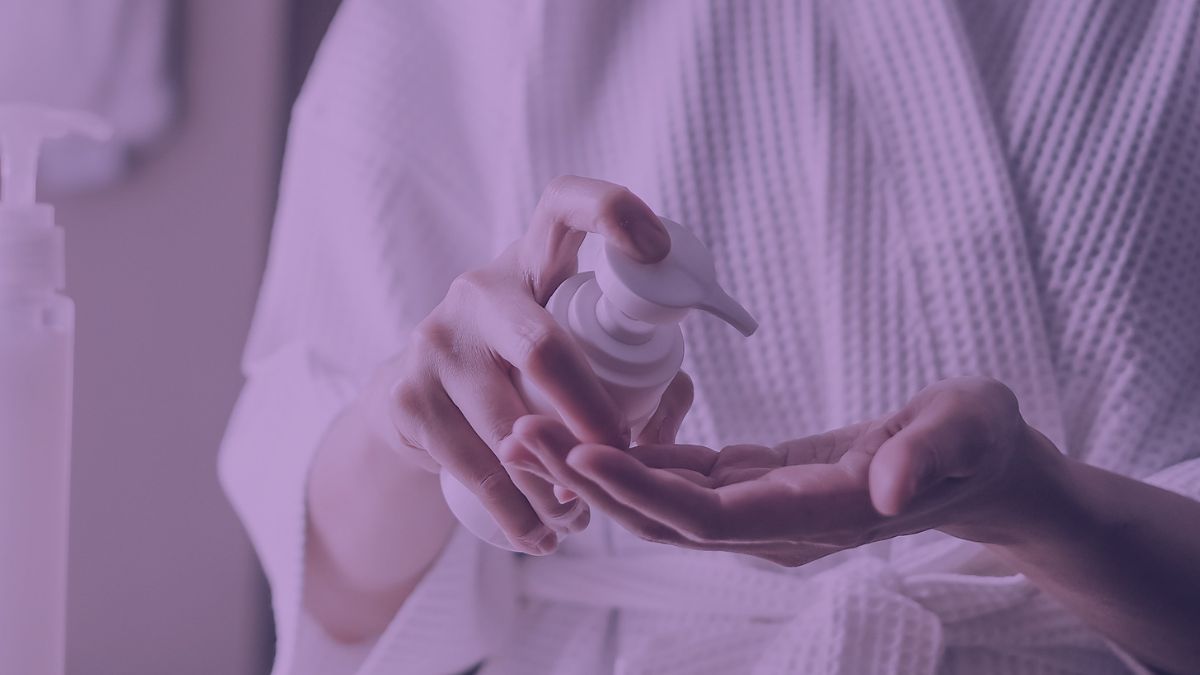
What is Adapalene?
Adapalene is a topical retinoid used to treat mild to moderate acne.
Available in over-the-counter gels in 0.1% concentration and prescription-strength formulas in 0.3% concentration, the treatment works by binding to specific receptors in the nucleus of cells, which are involved in gene expression and cell differentiation and change how skin cells grow and behave.
This action results in the skin cells regenerating and turning over faster than usual, improving the complexion by reducing dead skin cells stuck inside the pores and becoming a food source for the acne-causing bacteria.
Furthermore, this action will help reduce inflammation caused by bacterial overgrowth and minimize the appearance of acne.
Adapalene also helps reduce inflammation and effectively treats open comedones, closed comedones, and inflamed pimples.
The benefits of using adapalene:
- Reduces the severity of moderate to severe acne.
- Brightens and evens out the complexion.
- Refines enlarged pores.
- Fades post-inflammatory redness.
- Fades hyperpigmentation.
- Improves the appearance of acne scars.
What is Niacinamide?
Niacinamide is a form of vitamin B3 and a water-soluble component frequently used in skincare products due to its ability to improve several skin concerns, including acne, uneven skin tone and texture, post-inflammatory hyperpigmentation, post-inflammatory redness, and premature signs of aging.
Found in all types of skincare products, including cleansers, toners, serums, moisturizers, and even sunscreens, niacinamide protects skin cells from oxidative stress by inhibiting the reactive oxygen species (ROS) that cause cell damage.
By doing this, niacinamide can help promote cell health, resulting in visible skin changes. Healthy cells reproduce and heal faster, so skin is better able to repair itself and maintain its vibrancy.
Additionally, when the cells are healthy and regenerate faster, the skin will look younger, plumper, and more even.
Furthermore, niacinamide aids the production of ceramides, which are essential lipids that help maintain the skin’s barrier and keep its hydration levels balanced.
By doing this, niacinamide helps strengthen the protective layer of your skin, making it more resistant to damage and minimizing the overgrowth of harmful bacteria that may be responsible for common inflammatory conditions such as acne.
Finally, niacinamide is also an excellent tyrosinase inhibitor, meaning it helps prevent the production of excess melanin, which is responsible for dark spots on the skin, thus helping fade existing hyperpigmentation and preventing new discoloration from forming in the deeper layers of the epidermis.
So, with all that said, we can conclude that niacinamide offers multiple benefits for the skin.
In short, here are some of the benefits of using niacinamide:
- Reduces inflammation and redness.
- Reduces the severity of acne.
- Refines the appearance of skin texture.
- Fades hyperpigmentation.
- Improves the skin barrier’s function.
- Hydrates, plumps, and encourages the skin to become more resilient.
Can You Mix Adapalene With Niacinamide?
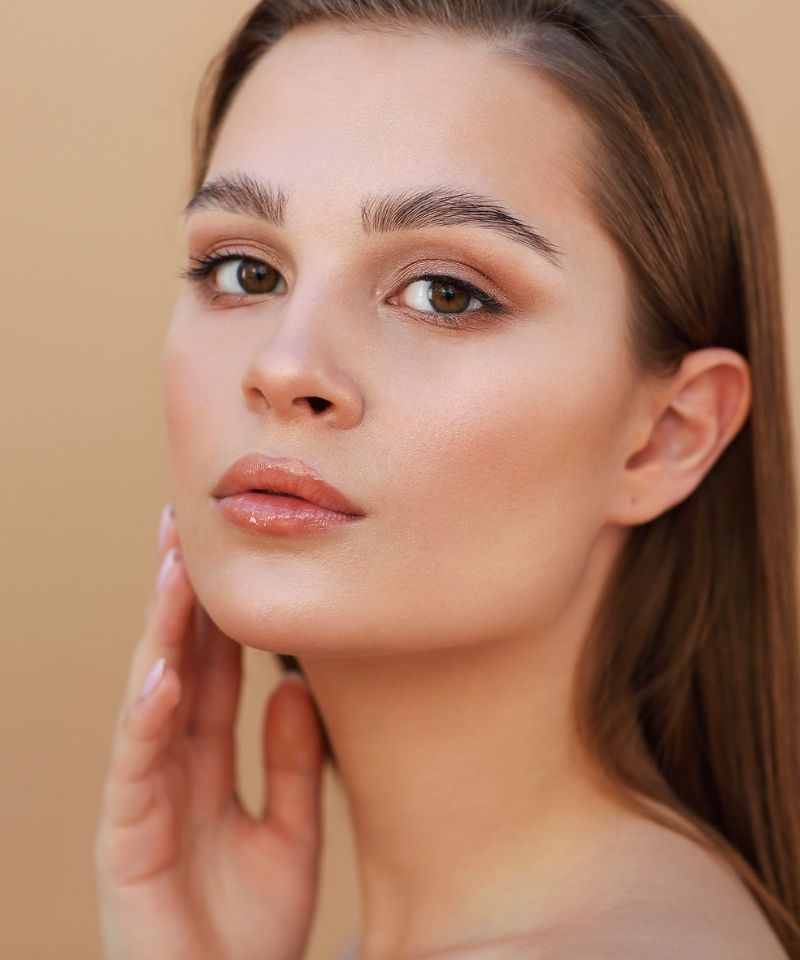
Adapalene and niacinamide can make a fantastic combo in targeting inflammatory skin conditions like acne along with pigmentary disorders such as dark spots, sun spots, acne scars, and hormonal conditions such as melasma.
When combined, adapalene’s ability to increase cellular turnover and clear the pores of cellular buildup, combined with niacinamide’s anti-inflammatory properties, can help minimize the number and severity of acne.
Additionally, due to its tyrosinase-inhibiting properties, niacinamide can also help lighten and fade the dark spots left behind from past breakouts, UV damage, or hormonal conditions like melasma while adapalene will help the pigmented areas shed faster and speed up the healing process.
Furthermore, both adapalene and niacinamide can help speed up the healing process of several types of acne scarring, including post-inflammatory erythema, or red spots, post-inflammatory hyperpigmentation, or dark spots, and even improve the appearance of atrophic acne scars by refining skin texture, aiding in the production of ceramides that keep the skin’s barrier strong and hydrated, and promoting collagen production, which can help plump up the skin.
Finally, since both adapalene and niacinamide have antioxidant properties, they can help protect the skin from environmental pollutants, free radicals, and other damaging molecules that can adversely affect the skin.
In conclusion, adapalene and niacinamide can be an excellent skincare combination that can tackle several skin concerns and improve the skin’s health and appearance.
The Side Effects of Using Adapalene With Niacinamide
The main side effects of using adapalene with niacinamide are irritation, dryness, redness, flaking, stinging, and burning.
This is usually because it may take your skin some time to adjust to the combination, which is why you should always start slowly before gradually increasing the frequency of use.
Additionally, having a complete skincare routine that’s focused on nourishing your skin and mitigating the initial side effects of over-the-counter retinoids such as adapalene is also crucial, as it will help reduce the potential side effects by strengthening your skin barrier and making your skin better prepared for the powerful ingredients.
However, if the side effects become unbearable and persist for longer than the initial four weeks, which is considered to be the adjustment period, discontinuing the use of either one or both products is recommended.
This will give your skin some time to recover and heal and will also give you a better idea of which product (s) may be causing the side effects.
Once your skin has recovered, you can try reintroducing one or both products in lower concentrations or less frequent usage to find the optimal combination for your skin that will help you achieve the desired results without irritation.
The Best Niacinamide Products You Can Use With Adapalene
Here are the best niacinamide products you can safely combine with adapalene for accelerated results:
Paula’s Choice Pore-Reducing Toner
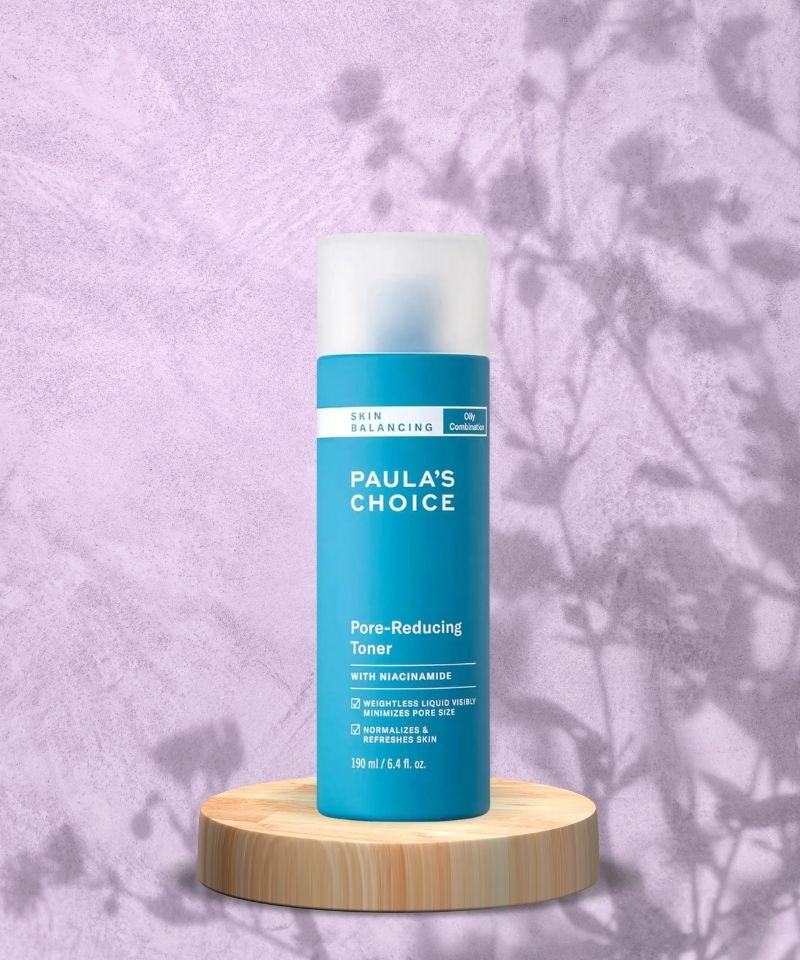
The Pore-Balancing Toner by Paula’s Choice is a lightweight and refreshing solution that helps restore skin’s natural pH balance, reduce the appearance of pores, and soothe irritations.
A perfect pick-me-up for when your skin is going through the adjustment period of adapalene, the toner is formulated with brightening niacinamide, along with hydrating hyaluronic acid, barrier-strengthening ceramides and soothing chamomile and burdock root extract that help calm sensitive skin while providing antioxidant benefits.
Best for sensitive, irritated skin.
Paula’s Choice 10 Niacinamide Booster
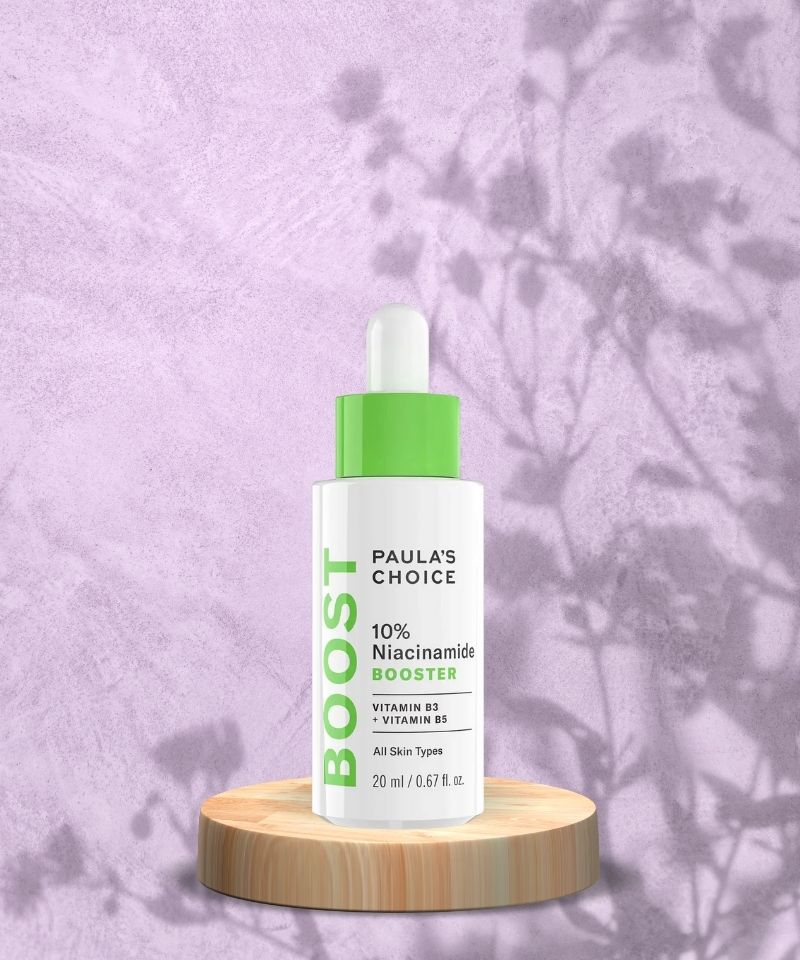
The 10 Niacinamide Booster by Paula’s Choice is a powerhouse of concentration that helps improve the texture and tone of your skin.
This serum is formulated with 10% niacinamide, which helps reduce inflammation and redness, minimizes pore size, fades hyperpigmentation, corrects discolored areas, and boosts the skin’s natural barrier function.
It also contains brightening antioxidants such as vitamin C and redness-reducing green tea extract to help protect the skin from environmental stressors.
The booster can be used on all skin types and is a great product to pair with adapalene for added benefits.
Best for all skin types.
SkinCeuticals Discoloration Defense
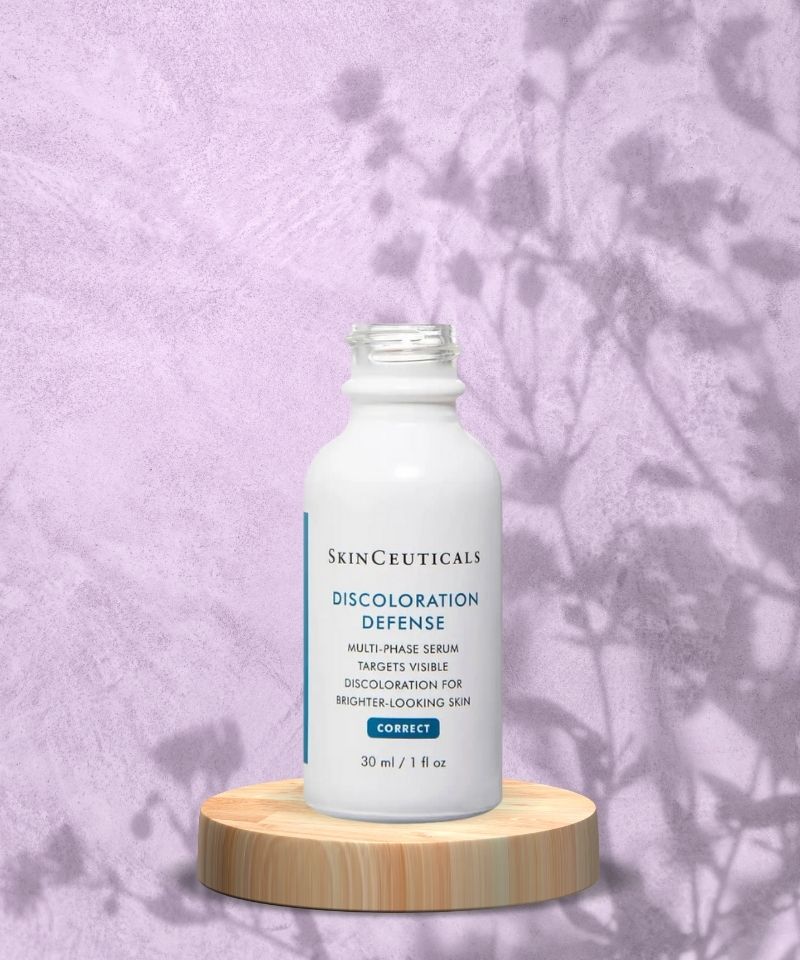
SkinCeuticals Discoloration Defense can be a fantastic addition to adapalene for anyone dealing with stubborn pigmentary concerns, such as post-inflammatory hyperpigmentation, uneven skin tone, photodamage, and age spots that form due to prolonged and unprotected UV exposure.
The blend of brightening niacinamide along with tranexamic acid, kojic acid, and 5% HEPES, a synthetically-derived acid that dissolves the bonds binding dead skin cells together and encourages them to shed, work together to relieve hyperpigmentation and promotes a clear and more uniform complexion.
Best for hyperpigmentation, acne scars, and UV damage.
PCA SKIN Vitamin B3 Brightening Serum
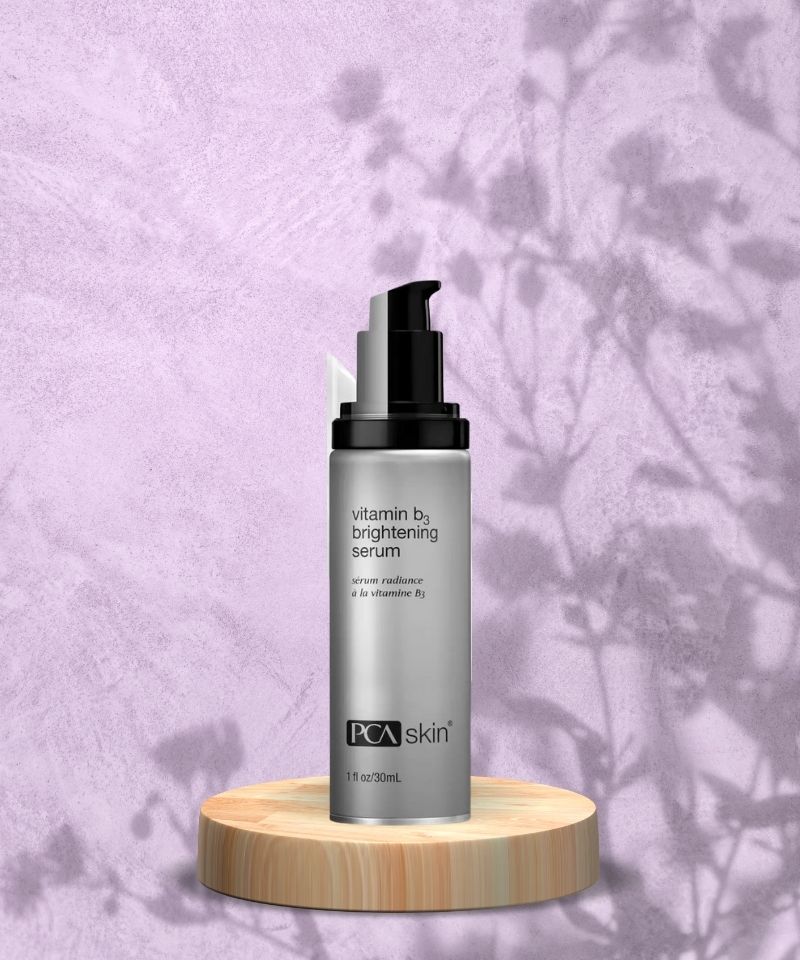
PCA SKIN Vitamin B3 Brightening Serum contains a blend of powerful skin-brightening ingredients such as niacinamide, mulberry extract, and plankton extract to target excess pigment production in the deeper layers of the epidermis.
The addition of soothing green tea extract also makes this serum suitable for those dealing with redness caused by active acne, while oligopeptides work to promote collagen production and improve the appearance of atrophic acne scars.
Best for redness, acne scars, and hyperpigmentation.
SkinCeuticals Phyto A+ Brightening Treatment Lightweight Moisturizer
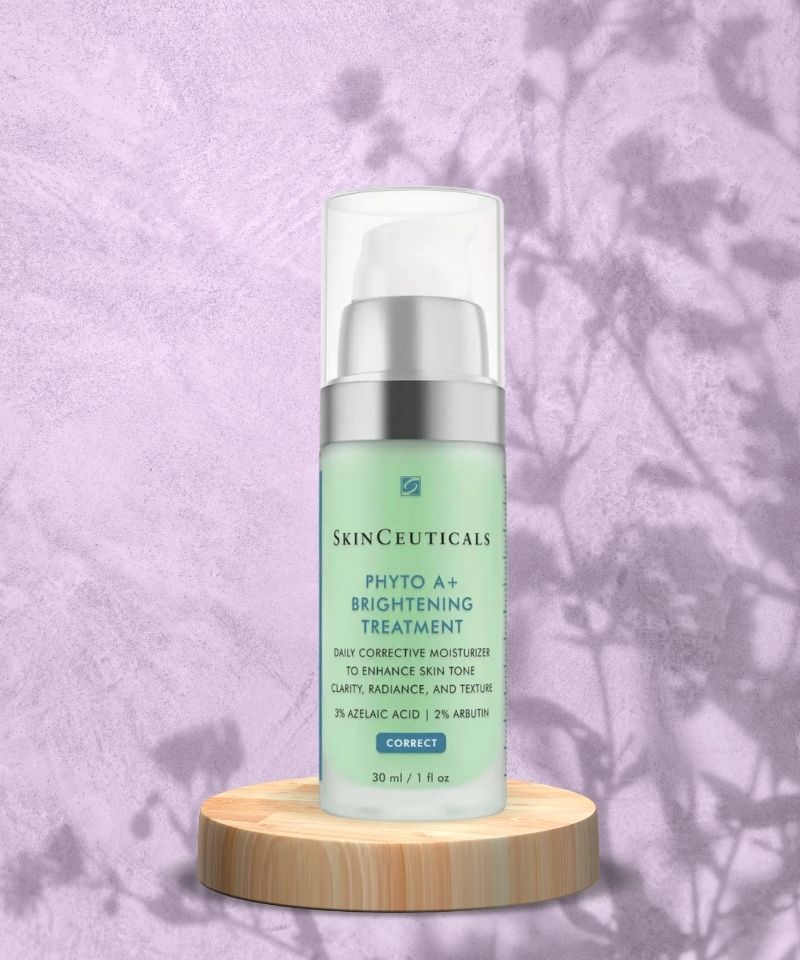
The Phyto A+ Brightening Treatment is a lightweight, oil-free moisturizer by SkinCeuticals formulated to combat the dark spots and uneven tone that result from hormonal fluctuations and UV damage.
Infused with a powerful combination of brightening agents such as niacinamide, azelaic acid, and a botanical blend to calm, soothe, and reduce visible redness with a blend of cucumber, thyme, and olive leaf extracts that comforts skin, this hydrating cream helps promote a more even complexion while providing your skin with essential moisture.
Ideal for normal to oily skin types, the addition of plant-derived glycerin helps rebalance the hydrolipid film and lock in moisture without leaving behind a greasy residue, making it perfect for those who want to achieve maximum results with minimal irritation when using adapalene.
Best for normal to oily skin.
La Roche-Posay Toleriane Sensitive Fluide
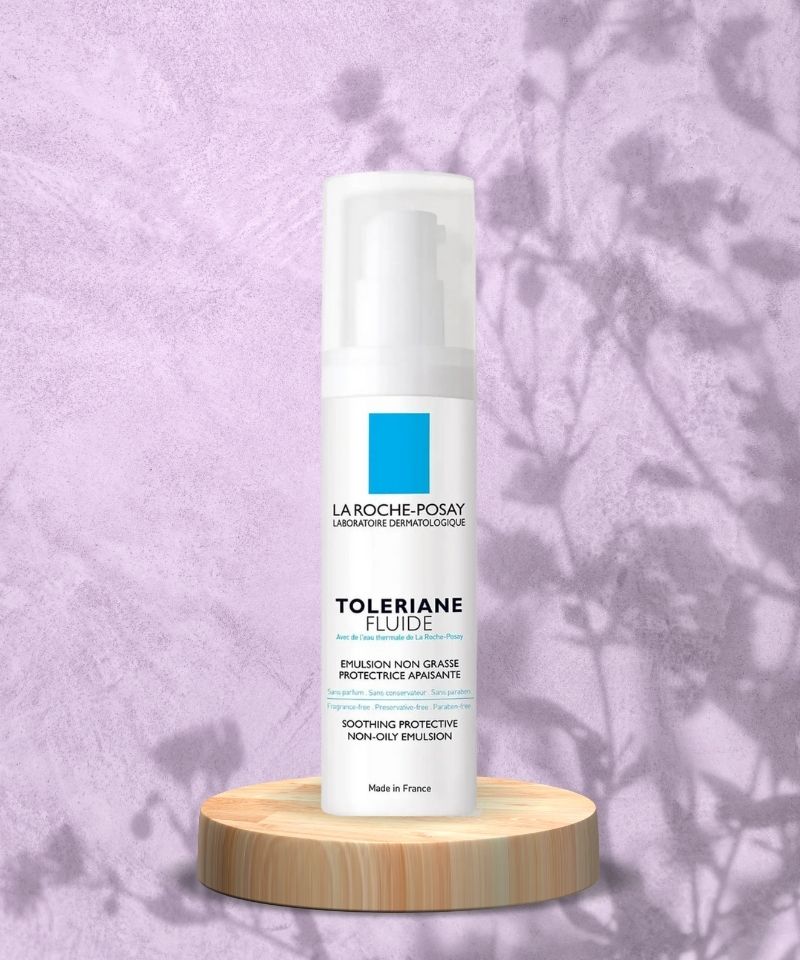
The Toleriane Sensitive Fluide by La Roche-Posay is a lightweight emulsion specially formulated for skin that gets clogged and breaks out easily.
It is formulated with only ten ingredients, including water, caprylic/capric triglyceride, which are lipids important for skin’s health, along with soothing propanediol, brightening and balancing niacinamide, and a few other humectants and stabilizers.
Exceptionally good for sensitive and reactive skin, as well as skin that’s getting used to adapalene, the Toleriane Sensitive Fluide will nourish, hydrate and protect without leaving an oily residue or clogging your pores.
Best for oily, clog-prone skin.

My name is Simone and I am a certified skin specialist. I created this website to teach my readers how to take great care of their skin and I also like to occasionally share my honest opinions on skincare products I’ve tried. You can learn more about me here.
